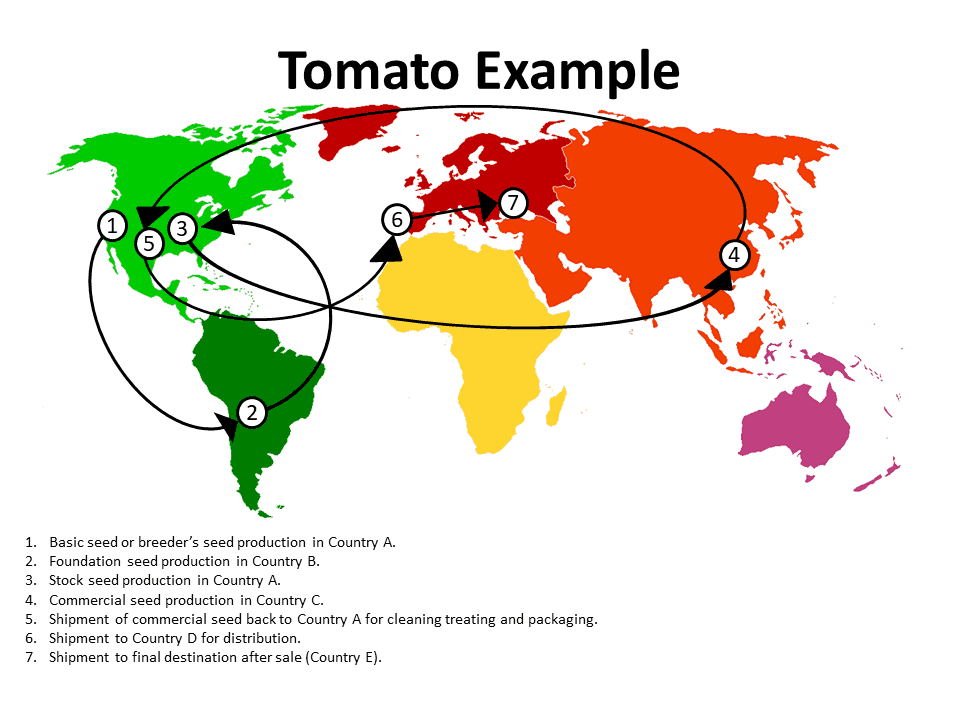
Agriculture is often defined in terms of domestic production, but the seeds for most of these products – unbeknownst to many consumers – spend considerable time during their lifecycle shuttling around the world.
Today’s seed producer may originate a new plant seed in a U.S. greenhouse, ship it overseas for further research, testing and multiplication, and then back to the U.S. multiple times over a period of years before it is ready to be used for commercial planting.
“All types of seeds move globally at some stage in their development,” Andrew LaVigne, president and CEO of the Alexandria, Virginia-based American Seed Trade Association (ASTA), explained in a recent telephone interview with American Shipper. “Seed producers are constantly improving the germination and quality of their seed through this method.”
Founded in 1883, ASTA today represents more than 700 companies involved in seed production, plant breeding and related industries across North America.
Seed producers are highly integrated shippers, meaning that they are not only moving test seeds globally, but also transporting large volumes of seeds across continents to meet different planting seasons.
For example, between 10% and 25% of corn and soybean seed planted each spring in the U.S. Midwest originates in South America and is shipped northbound at the conclusion of the region’s autumn crop harvests.
“It’s risk management,” LaVigne said. “Depending on the crop year, corn and soybean seed companies may not be able to produce all the seed necessary due to the weather to fully plant the following year and must rely on supplemental imported seed.”

American seed producers have weathered the effects of droughts and flooding before, but the coronavirus pandemic’s global impact on freight transportation services has challenged these companies and their customers like nothing before.
“As we head into the spring planting season in the midst of a global pandemic, America’s seed companies are working hard to make sure farmers, ranchers and homeowners have access to the quality seed they need to ensure a successful year,” LaVigne said in a March 25 statement.
“U.S. seed companies have put into place the necessary practices to comply with COVID-19 recommendations from the U.S. Centers for Disease Control and Prevention and other agencies as they continue to deliver seed during this challenging time,” he added.
LaVigne said the biggest challenge for American seed producers this spring has been the upheaval in available air cargo capacity due to the coronavirus. Many seed shipments move around the world in the bellies of passenger planes.
While ocean container transport is also used, seed delivery often becomes a “just-in-time” event. For example, when the seed arrives in U.S. ports for springtime planting, it must pass regulatory inspection and then be routed through processing centers over a period of two to three weeks before its delivery to a farmer’s fields.
Seed producers must also contend with the weather. “Mother Nature often gives us very small windows to plant,” LaVigne said.
With international passenger services largely on hold, some airlines have turned their airplanes into de facto freighters to move cargoes such as seed.

American Airlines (NASDAQ: AAL) airlifted 290 tons of soybean seed in the bellies of its Boeing 777-300 passenger planes operating as freighters between Buenos Aires, Argentina, and Miami during the past several weeks, including individual record flights of 115,349 pounds of this cargo on April 16 and 118,000 pounds on April 26.
The airline’s last scheduled flight of soybean seed from Argentina for the season is expected to arrive in Miami on May 3, Lorena Sandoval, American’s director of cargo sales for Mexico, the Caribbean and Latin America, told American Shipper.
After the soybean seed shipments end, Sandoval expects American’s airplanes from Buenos Aires to the U.S. will be filled with Chilean salmon and Argentine beef shipments. She said the flights from the U.S. to the South American country are expected to carry shipments of computers, laptops and mobile telephones, as well as medical equipment and pharmaceuticals.

